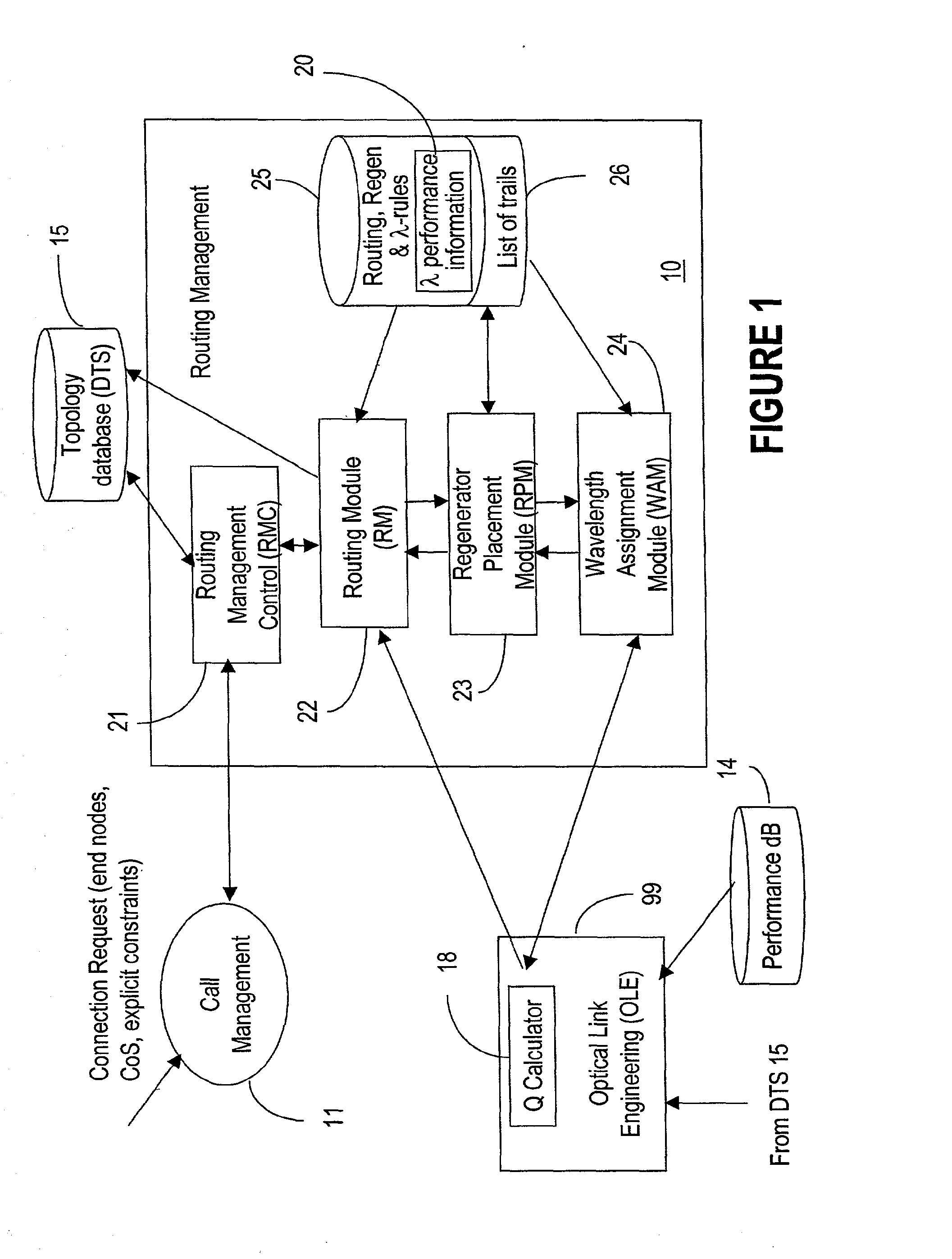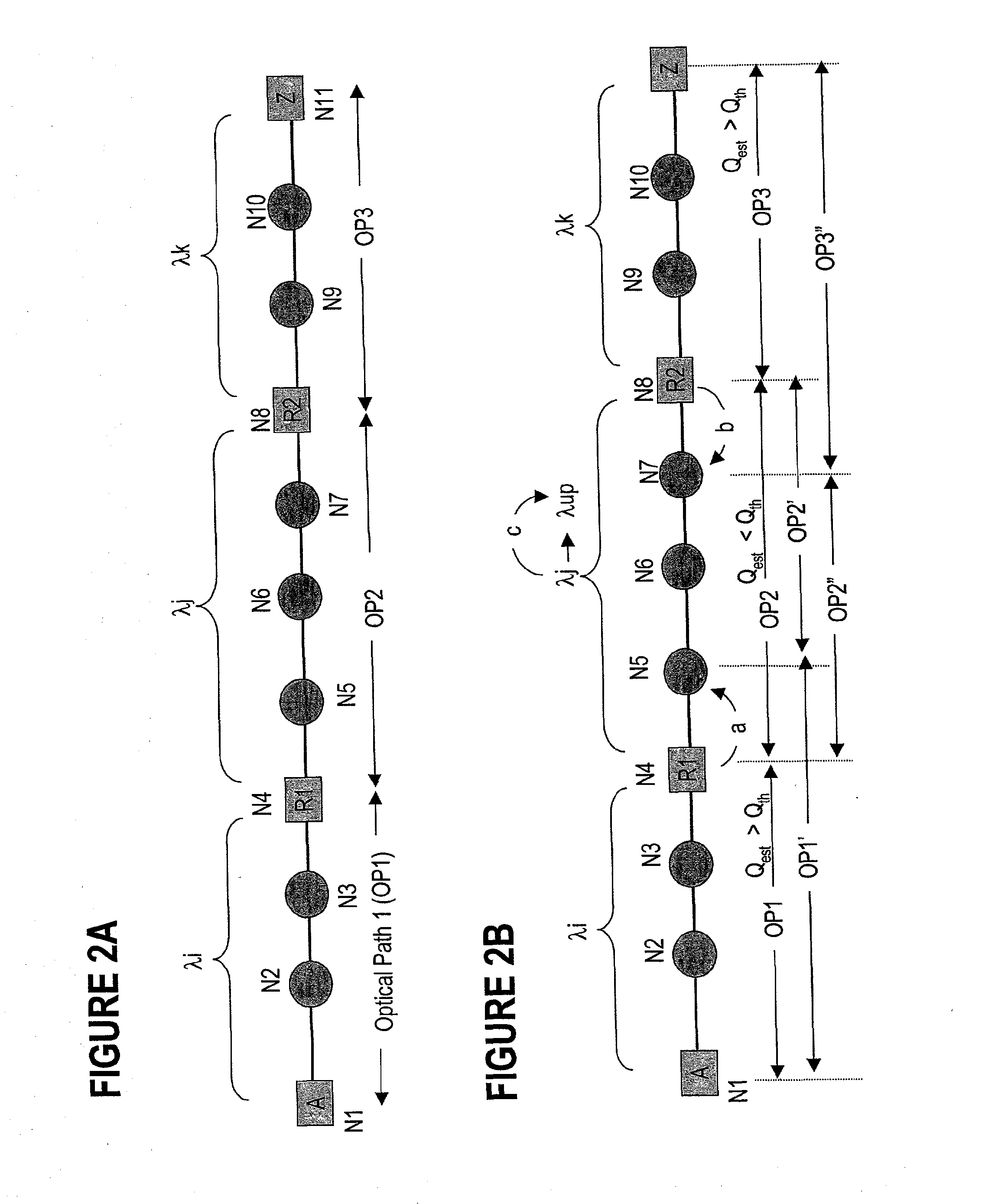Dynamic Assignment Of Wavelengths In Agile Photonic Networks
a photonic network and dynamic assignment technology, applied in the field of agile photonic networks, can solve the problems of complex assignment of wavelengths, reduced network cost, and inability to fully exploit the advantages of ulr, and achieve the effects of reducing time-to-bandwidth (ttb), reducing the complexity of nodes, and reducing network costs
- Summary
- Abstract
- Description
- Claims
- Application Information
AI Technical Summary
Benefits of technology
Problems solved by technology
Method used
Image
Examples
Embodiment Construction
[0035]The following description is of a preferred embodiment by way of example only and without limitation to combination of features necessary for carrying the invention into effect.
[0036]The following definitions are used throughout this specification: “Dial”, “Redial”, “Call” or “connection request” refers to a request for exchanging traffic between two nodes. It includes conditions such as the source and destination nodes, traffic bandwidth and rate, the class of service CoS, the type of routing, explicit constraints, etc.
[0037]“Photonic network” is a network where an end-to-end connection is established along a trail whereby the traffic may be automatically switched at all or some intermediate nodes in optical format. The nodes of a photonic network could be optical add / drop multiplexing (OADM) nodes that provide add, drop and optical passthrough, or could be optical cross-connect nodes that provide add, drop and optical switching of the passthrough traffic.
[0038]A “connection”...
PUM
 Login to View More
Login to View More Abstract
Description
Claims
Application Information
 Login to View More
Login to View More - R&D
- Intellectual Property
- Life Sciences
- Materials
- Tech Scout
- Unparalleled Data Quality
- Higher Quality Content
- 60% Fewer Hallucinations
Browse by: Latest US Patents, China's latest patents, Technical Efficacy Thesaurus, Application Domain, Technology Topic, Popular Technical Reports.
© 2025 PatSnap. All rights reserved.Legal|Privacy policy|Modern Slavery Act Transparency Statement|Sitemap|About US| Contact US: help@patsnap.com



